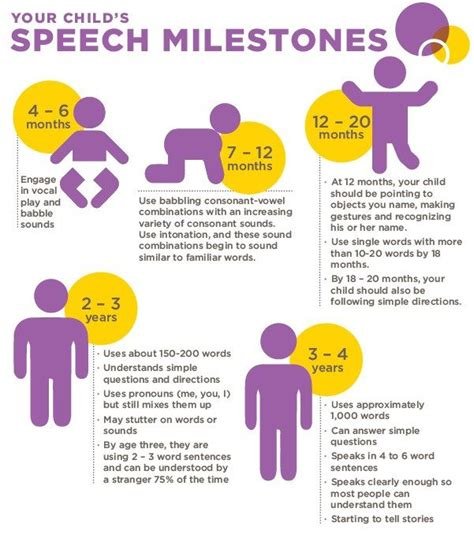How to Encourage Healthy Eating Habits in Kids: Tips for Parents
As parents, one of our biggest responsibilities is to instill healthy eating habits in our children. However, getting kids to eat nutritious meals can be a constant struggle. In this blog post, we will explore some effective tips and strategies for encouraging healthy eating habits in kids. From setting a positive example as parents to getting kids involved in meal planning, we will discuss various approaches to make mealtime a positive and nurturing experience. Additionally, we will delve into the importance of creating colorful and appealing plates, making healthy snacks easily accessible, and introducing a variety of fruits and vegetables. We will also explore the idea of incorporating fun and creative food presentations, limiting sugary beverages, and promoting water as the go-to drink. Furthermore, we will discuss the benefits of encouraging family meals and mindful eating, as well as educating children about the advantages of healthy eating. Finally, we will highlight the significance of rewarding and praising healthy food choices. Join us as we delve into the world of nurturing healthy eating habits in our children.
Setting a positive example as parents
As parents, it is important to set a positive example for our children when it comes to healthy eating habits. Children are highly influenced by their parents’ behavior, and they are more likely to develop healthy eating habits if they see their parents making nutritious choices. This means that we as parents need to be mindful of our own eating habits and ensure that we are modeling healthy eating behaviors for our children.
One way to do this is by including a wide variety of fruits and vegetables in our own diets. By showing our children that we enjoy and value these foods, we can encourage them to try new things and develop a taste for nutritious options. Additionally, we can involve our children in meal planning and cooking, showing them that preparing and enjoying healthy meals can be fun and rewarding.
Limiting the consumption of sugary beverages and promoting water as the go-to drink in the household is another important way to set a positive example. Parents can demonstrate the importance of staying hydrated and the benefits of choosing water over sugary drinks. By creating a healthy environment at home, parents can help their children develop lifelong healthy eating habits.
Ultimately, setting a positive example as parents when it comes to healthy eating involves not only making wise food choices, but also talking to our children about the benefits of healthy eating and the impact it has on our overall well-being. By being mindful of our own habits and behaviors, we can empower our children to make healthy choices and set them up for a lifetime of health and wellness.
Getting kids involved in meal planning
One of the most effective ways to encourage healthy eating habits in children is to involve them in the meal planning process. By including kids in deciding what to eat for meals and snacks, parents can empower them to make healthier choices and develop a positive attitude towards food.
When kids are involved in meal planning, they are more likely to be open to trying new foods and flavors. This can help expand their palate and make them more receptive to a wider variety of fruits, vegetables, and other nutritious foods. By giving them a say in what they eat, parents can also reduce the likelihood of mealtime battles and picky eating habits.
Meal planning with kids can also be a fun and educational activity. Parents can use this opportunity to teach children about the importance of balanced nutrition and the benefits of eating a wide range of foods. It can also be a chance to introduce them to new cooking skills and involve them in food preparation, further fostering a positive relationship with food.
Overall, getting kids involved in meal planning not only helps promote healthy eating habits, but also strengthens family bonds and provides valuable life skills that children can carry into adulthood.
Creating a colorful and appealing plate
Creating a colorful and appealing plate can make a big difference in getting kids excited about healthy eating. When children see a plate filled with vibrant colors, it immediately grabs their attention and makes the meal more appealing. By incorporating a variety of colorful fruits and vegetables, parents can create an attractive and visually stimulating plate that entices children to try new foods.
One way to create a colorful plate is to include a mix of different fruits and vegetables, such as red peppers, yellow squash, green peas, and purple grapes. This not only adds visual interest to the plate, but also ensures that kids are getting a wide range of nutrients and vitamins. Parents can also get creative with food presentation, using cookie cutters to create fun shapes and arranging the foods in a visually appealing way.
Another way to make a plate more colorful is to involve kids in the meal planning and preparation process. Allowing children to choose their favorite fruits and vegetables and participate in the cooking process can make them more invested in the meal, and more likely to eat what’s on their plate.
Ultimately, creating a colorful and appealing plate is a simple yet effective way to make healthy eating more enjoyable for kids. By making healthy foods visually appealing and involving kids in the process, parents can encourage their children to develop a positive attitude towards nutritious foods.
Making healthy snacks easily accessible
One of the keys to maintaining a healthy diet is having access to nutritious snacks. When healthy options are readily available, it becomes easier to make smart choices throughout the day. By making healthy snacks easily accessible, we can ensure that both children and adults are reaching for wholesome options when hunger strikes.
Start by designating a specific area in the kitchen or pantry for healthy snacks. Keep this space stocked with a variety of options such as fresh fruit, pre-cut vegetables, nuts, seeds, and whole grain crackers. By having these items readily available, it eliminates the temptation to reach for less nutritious options.
Another way to promote healthy snacking is by prepping snacks in advance. Spend some time on the weekends washing and cutting up fruits and vegetables, portioning out nuts and seeds, and preparing homemade granola bars. Having these snacks ready to grab and go makes it more likely that they will be chosen over less healthy options.
Additionally, consider keeping a stash of healthy snacks in convenient places, such as the car, office, or gym bag. This ensures that no matter where you are, you have access to nutritious options when hunger strikes. By making healthy snacks easily accessible, we can encourage everyone to make positive choices for their overall well-being.
Introducing a variety of fruits and vegetables
When it comes to encouraging healthy eating habits in children, one of the most important things parents can do is introduce a variety of fruits and vegetables into their diet. Not only does this help ensure that kids are getting a wide range of essential vitamins and minerals, but it also helps expand their palate and make them more open to trying new foods.
One way to get kids excited about fruits and vegetables is to involve them in the selection process. Take them grocery shopping and encourage them to pick out a new fruit or vegetable to try each week. This not only gives them a sense of autonomy and control, but it also helps them feel more invested in trying new foods.
Another effective way to introduce a variety of fruits and vegetables is to serve them in a creative and appealing way. Use fun and colorful plates to make meals more visually enticing, and consider creating fun food art to make fruits and vegetables more exciting and appealing to kids.
Finally, it’s important for parents to lead by example. If children see their parents enjoying a wide variety of fruits and vegetables, they are more likely to follow suit. By making healthy eating a family affair, parents can help ensure that their children develop a lifelong love for fruits and vegetables.
Incorporating fun and creative food presentations
One of the best ways to encourage kids to eat healthy is by incorporating fun and creative food presentations. When kids see their food presented in a playful and imaginative way, they are more likely to be excited about eating it. You can get creative by arranging fruits and vegetables into fun shapes and designs, or by using colorful and eye-catching plates and utensils to make meals more visually appealing.
Another way to incorporate fun into food presentations is by involving kids in the process. Let them help create their own food art by arranging their meals themselves. By giving them some control over how their food is presented, you can make mealtime a fun and interactive experience.
Additionally, you can use themed presentations to get kids excited about their meals. For example, you can create a build your own taco night or a make your own smoothie bowl morning. By incorporating themes and allowing kids to customize their meals, you can make healthy eating more enjoyable for them.
Overall, incorporating fun and creative food presentations is a great way to encourage kids to eat healthy. By making meals visually appealing and interactive, you can make the dining experience more enjoyable and instill positive eating habits in children.
Limiting sugary beverages and promoting water
As parents, it’s important to limit sugary beverages and encourage our children to drink more water for their overall health and well-being. By doing so, we can help prevent the negative effects of excessive sugar consumption, such as tooth decay, obesity, and type 2 diabetes.
One way to promote water consumption is to make it easily accessible to our kids. Whether at home or on the go, always have a reusable water bottle handy for them to fill up. Encouraging them to drink water as their first choice of beverage will help them develop a preference for it over sugary drinks.
Another strategy is to set a positive example as parents by choosing water as our own go-to drink. When our children see us prioritizing water over sugary beverages, they are more likely to follow suit. Additionally, we can involve them in meal planning and grocery shopping to pick out a variety of fruits and vegetables that can be used to infuse water and create delicious, flavored drinks.
We can also educate our children about the benefits of drinking water, such as keeping their bodies hydrated, aiding in digestion, and promoting concentration and focus. By explaining the importance of water in a way they understand, they will be more likely to embrace it as their beverage of choice.
Encouraging family meals and mindful eating
One of the most effective ways to promote healthy eating habits in children is by encouraging family meals and mindful eating. When parents and children eat together, it creates a positive example for kids to learn and mimic. It also provides an opportunity for parents to educate their children about the importance of nutrition and making healthy food choices.
Family meals can also promote mindful eating, which is the practice of paying attention to the taste, texture, and sensation of food, as well as the cues of hunger and fullness. By encouraging children to eat slowly and savor their food, parents can help them develop a healthy relationship with food and prevent overeating.
Furthermore, family meals allow for open communication and bonding time. It’s a chance for everyone to share their day, connect, and enjoy each other’s company. This positive environment can help reduce stress and emotional eating tendencies in children, leading to better overall health and well-being.
Overall, encouraging family meals and mindful eating is a powerful way to instill healthy eating habits in children and create a positive and nurturing eating environment for the whole family.
Educating children about the benefits of healthy eating
Educating children about the benefits of healthy eating is crucial for their overall well-being and development. It is important to instill good eating habits in them from a young age so that they can carry these habits into adulthood. By teaching children about the importance of eating nutritious foods, we can help them make informed decisions about what they put into their bodies.
One way to educate children about the benefits of healthy eating is to involve them in meal planning and grocery shopping. By allowing them to select their own fruits, vegetables, and other nutritious foods, they can learn about the different food groups and the benefits of each. This hands-on approach can make learning about healthy eating more engaging and memorable for children.
Another effective way to educate children about the benefits of healthy eating is to lead by example. When children see their parents and caregivers making healthy food choices, they are more likely to follow suit. This can involve demonstrating portion control, choosing whole grains over processed foods, and reaching for water instead of sugary beverages.
In addition to educating children about the benefits of healthy eating, it is important to involve them in the preparation and cooking of meals. This can help them develop a better understanding of where their food comes from and how it is prepared. By engaging children in the kitchen, we can teach them valuable cooking skills and encourage them to take pride in the meals they have helped to create.
Rewarding and praising healthy food choices
One of the most effective ways to encourage children to make healthy food choices is by rewarding and praising their good decisions. When kids choose to eat fruits and vegetables instead of sugary snacks, it’s important to acknowledge and celebrate their choice. This positive reinforcement helps kids feel good about their decisions and encourages them to continue making healthy choices.
Parents can reward their children by offering praise and recognition for choosing healthy foods. This can be as simple as saying great job choosing that apple for a snack or I’m so proud of you for choosing broccoli for dinner. Children thrive on positive feedback, and this can help reinforce their good choices.
In addition to verbal praise, parents can also offer rewards in the form of special treats or activities. For example, if a child consistently makes healthy choices throughout the week, they could earn a special dessert on the weekend or a fun outing with the family. These rewards can serve as motivation for children to continue making healthy food choices.
By rewarding and praising healthy food choices, parents can help instill lifelong healthy eating habits in their children. This positive reinforcement can make healthy eating a positive and enjoyable experience for kids, setting them up for a lifetime of good nutrition.
Frequently Asked Questions
How can parents set a positive example for healthy eating habits?
Parents can set a positive example by consistently making healthy food choices, being mindful of portion sizes, and expressing enjoyment of nutritious foods.
What are some ways to get kids involved in meal planning?
Involving kids in meal planning can be done by letting them choose a healthy recipe, taking them grocery shopping, and encouraging them to help with meal preparation.
How can parents create a colorful and appealing plate to encourage healthy eating?
Parents can achieve this by incorporating a variety of colorful fruits and vegetables, arranging them in an eye-catching way, and making the plate look visually appealing.
What are some ways to make healthy snacks easily accessible for kids?
Healthy snacks can be made easily accessible by having pre-cut fruits and vegetables in the fridge, portioning out nuts or seeds, and keeping healthy snack options visible and within reach.
How can parents introduce a variety of fruits and vegetables to their kids?
Parents can do this by trying new fruits and vegetables themselves, involving the kids in grocery shopping, and incorporating a variety of produce into meals and snacks.
What are some ideas for incorporating fun and creative food presentations to make healthy eating more enjoyable for kids?
Fun and creative food presentations can include making fruit kabobs, creating smiley faces with food, and using cookie cutters to shape fruits and vegetables.
How can parents limit sugary beverages and promote water consumption?
Parents can limit sugary beverages by not purchasing them, keeping water readily available, and leading by example by choosing water as the go-to drink for the family.
What are some ways to encourage family meals and mindful eating?
Encouraging family meals and mindful eating can be done by establishing regular meal times, creating a pleasant dining atmosphere, and fostering open conversations during meals.
How can parents educate their children about the benefits of healthy eating?
Parents can educate their children by explaining the importance of nutrition, discussing the benefits of different food groups, and involving kids in age-appropriate discussions about the impact of food choices on health.
What are some strategies for rewarding and praising healthy food choices made by kids?
Parents can reward and praise healthy food choices by offering non-food rewards, providing positive reinforcement, and expressing sincere appreciation for the kids’ healthy choices.






